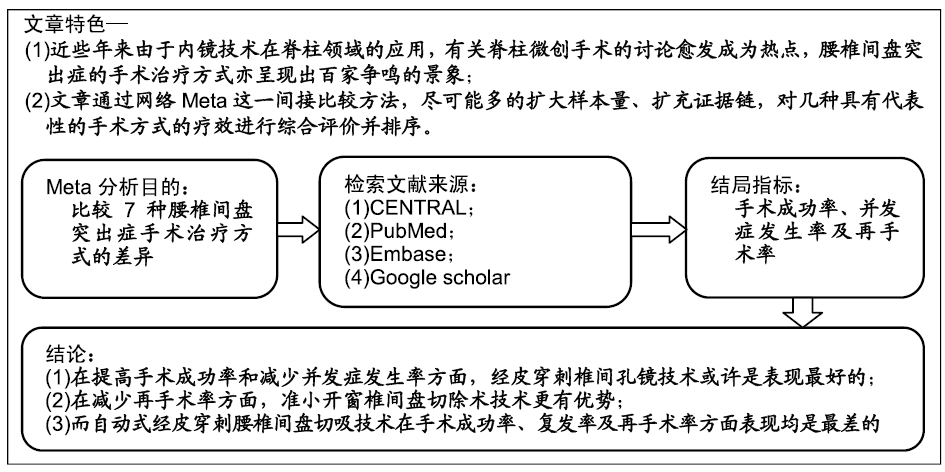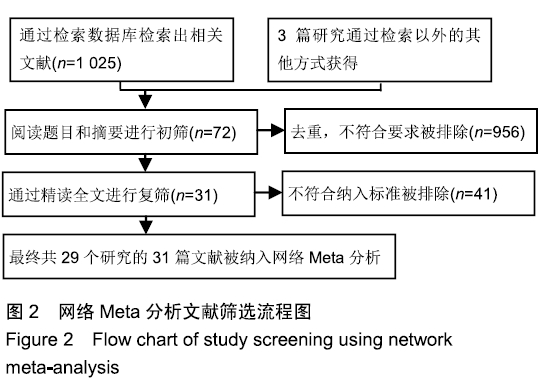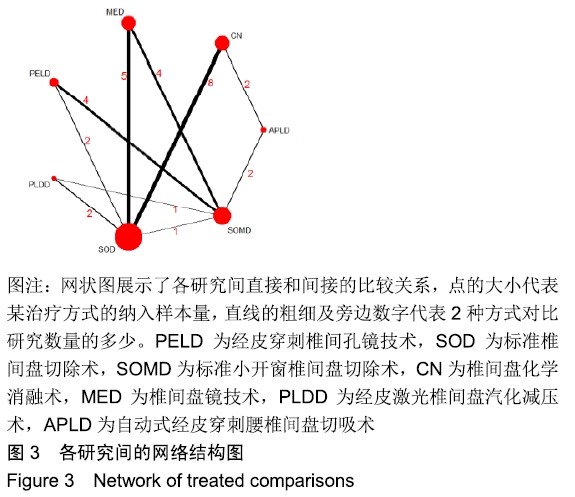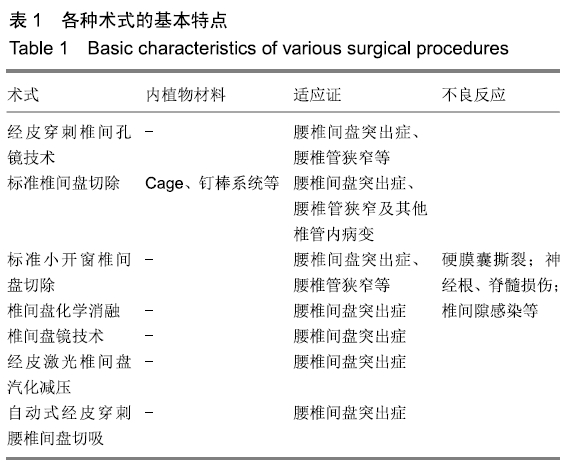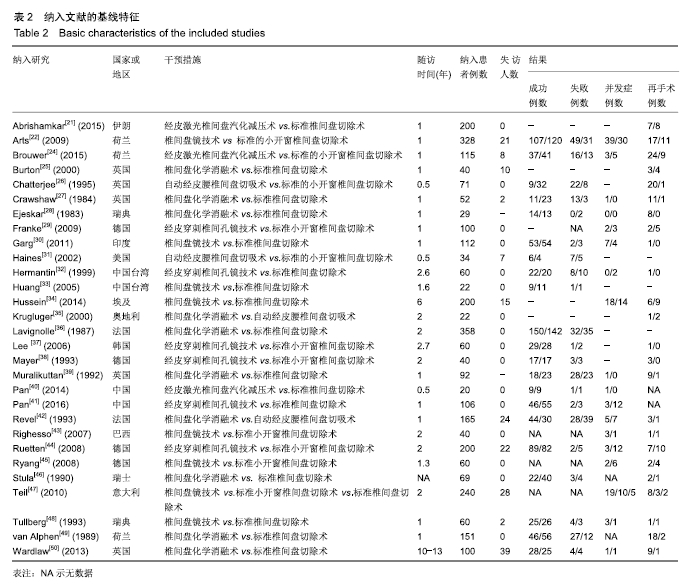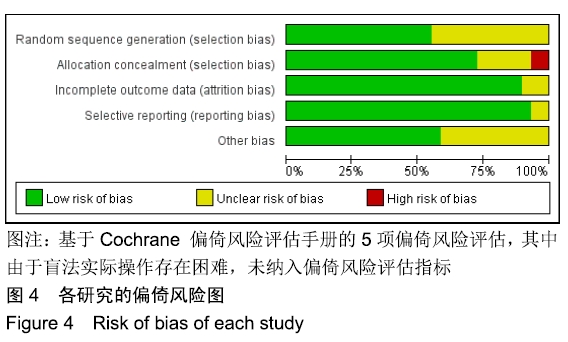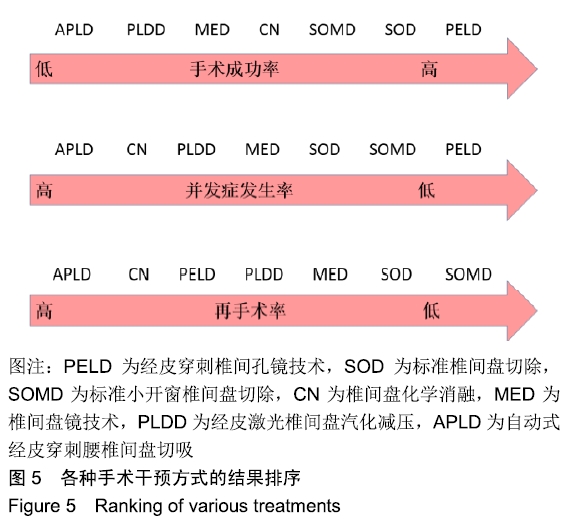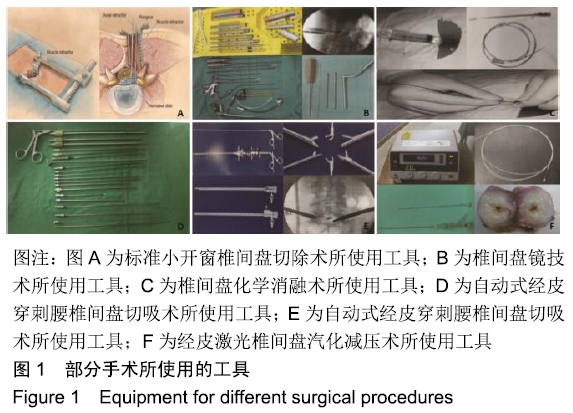[1] FRITSCH EW, HEISEL J, RUPP S. The failed back surgery syndrome: reasons, intraoperative findings, and long-term results: a report of 182 operative treatments. Spine. 1996;21:626-633.
[2] GIBSON JN, COWIE JG, IPRENBURG M. Transforaminal endoscopic spinal surgery: the future 'gold standard' for discectomy? A review. Surgeon. 2012;10:290-296.
[3] GIBSON JN, WADDELL G. Surgical interventions for lumbar disc prolapse: updated Cochrane Review. Spine. 2007;32:1735-1747.
[4] CONG L, ZHU Y, TU G. A meta-analysis of endoscopic discectomy versus open discectomy for symptomatic lumbar disk herniation. Eur Spine J. 2016; 25:134-143.
[5] BLAMOUTIER A. Surgical discectomy for lumbar disc herniation: surgical techniques. Orthop Traumatol Surg Res. 2013;99(1 Suppl):S187-196.
[6] MIXTER WJ, BARR JS. Rupture of the intervertebral disc with involvement of the spinal canal. New Eng J Med. 1934;211:205-210.
[7] BOKOV A, ISRELOV A, SKORODUMOV A, et al. An analysis of reasons for failed back surgery syndrome and partial results after different types of surgical lumbar nerve root decompression. Pain Physician. 2011;14:545-557.
[8] YASARGIL M. Microsurgical operation of herniated lumbar disc. Adv Neurosurg.1977;4:81-82.
[9] CASPAR W. A new surgical procedure for lumbar disc herniation causing less tissue damage through a microsurgical approach. Adv Neurosurg. 1977;4:74-77.
[10] VALAT JP, GENEVAY S, MARTY M, et al. Sciatica. Best Pract Res Clin Rheumatol. 2010;24(2):241-252.
[11] FOLEY M. Microendoscopic discectomy. Tech Neurosurg. 1997;3:301-307.
[12] SMITH L. Enzyme dissolution of the nucleus pulposus in humans. JAMA. 1964;187:137-140.
[13] ONIK G, HELMS CA, GINSBURG L, et al. Percutaneous lumbar diskectomy using a new aspiration probe. AJR Am J Roentgenol.1985;144(6): 1137-1140.
[14] CHOY DS, ASCHER P, LAMMER J, et al. Percutaneous laser catheter recanalization of carotid arteries in seven cadavers and one patient. AJNR Am J Neuroradiol. 1986;7(6):1050-1052.
[15] MAYER HM, BROCK M, BERLIEN HP, et al. Percutaneous endoscopic laser discectomy (PELD). A new surgical technique for non-sequestrated lumbar discs. Acta Neurochir Suppl (Wien). 1992;54:53-58.
[16] LAN T, CHANG L, RAHMATHULLAH MN, et al. Comparative efficacy of interventional therapies for early-stage hepatocellular carcinoma: a prisma-compliant systematic review and network meta-analysis. Medicine. 2016;95:e3185.
[17] HIGGINS J, GREEN S. Cochrane handbook for systematic reviews of interventions version 5.1.0[updated march 2011]. Cochrane Coll. 2011.
[18] CHAIMANI A, HIGGINS JP, MAVRIDIS D, et al. Graphical tools for network meta-analysis in STATA. PloS One. 2013;8:e76654.
[19] JANSEN JP, CRAWFORD B, BERGMAN G, et al. Bayesian meta-analysis of multiple treatment comparisons: an introduction to mixed treatment comparisons. Value Health. 2008;11:956-964.
[20] SALANTI G, ADES AE, IOANNIDIS JP. Graphical methods and numerical summaries for presenting results from multiple-treatment meta-analysis: an overview and tutorial. J Clin Epidemiol. 2011;64:163-171.
[21] ABRISHAMKAR S, KOUCHAKZADEH M, MIRHOSSEINI A, et al. Comparison of open surgical discectomy versus plasma-laser nucleoplasty in patients with single lumbar disc herniation. J Res Med Sci. 2015;20: 1133-1137.
[22] ARTS MP, BRAND R, VAN DEN AKKER ME, et al. Tubular diskectomy vs conventional microdiskectomy for sciatica: a randomized controlled trial. JAMA . 2009;302:149-158.
[23] ARTS MP, BRAND R, VAN DEN AKKER ME, et al. Tubular diskectomy vs conventional microdiskectomy for the treatment of lumbar disk herniation: 2-year results of a double-blind randomized controlled trial. Neurosurgery. 2011;69:135-144; discussion 144.
[24] BROUWER PA, BRAND R, VAN DEN AKKER-VAN MARLE ME, et al. Percutaneous laser disc decompression versus conventional microdiscectomy for patients with sciatica: Two-year results of a randomised controlled trial. Int Neuroradiol. 2017;23:313-324.
[25] BURTON AK, TILLOTSON KM, CLEARY J. Single-blind randomised controlled trial of chemonucleolysis and manipulation in the treatment of symptomatic lumbar disc herniation. Eur Spine J. 2000;9:202-207.
[26] CHATTERJEE S, FOY PM, FINDLAY GF. Report of a controlled clinical trial comparing automated percutaneous lumbar discectomy and microdiscectomy in the treatment of contained lumbar disc herniation. Spine. 1995;20:734-738.
[27] CRAWSHAW C, FRAZER AM, MERRIAM WF, et al. A comparison of surgery and chemonucleolysis in the treatment of sciatica. A prospective randomized trial. Spine. 1984;9:195-198.
[28] EJESKAR A, NACHEMSON A, HERBERTS P, et al. Surgery versus chemonucleolysis for herniated lumbar discs. A prospective study with random assignment. Clin Orthop Relat Res. 1983;(174):236-242.
[29] FRANKE J, GREINER-PERTH R, BOEHM H, et al. Comparison of a minimally invasive procedure versus standard microscopic discotomy: a prospective randomised controlled clinical trial. Eur Spine J. 2009;18: 992-1000.
[30] GARG B, NAGRAJA UB, JAYASWAL A. Microendoscopic versus open discectomy for lumbar disc herniation: a prospective randomised study. J Orthop Surg (Hong Kong). 2011;19:30-34.
[31] HAINES SJ, JORDAN N, BOEN JR, et al. Discectomy strategies for lumbar disc herniation: results of the LAPDOG trial. J Clin Neurosci.2002;9:411-417.
[32] HERMANTIN FU, PETERS T, QUARTARARO L, et al. A prospective, randomized study comparing the results of open discectomy with those of video-assisted arthroscopic microdiscectomy. J Bone Joint Surg Am. 1999;81:958-965.
[33] HUANG TJ, HSU RW, LI YY, et al. Less systemic cytokine response in patients following microendoscopic versus open lumbar discectomy. J Orthop Res. 2005;23:406-411.
[34] HUSSEIN M, ABDELDAYEM A, MATTAR MM. Surgical technique and effectiveness of microendoscopic discectomy for large uncontained lumbar disc herniations: a prospective, randomized, controlled study with 8 years of follow-up. Eur Spine J. 2014;23:1992-1999.
[35] KRUGLUGER J, KNAHR K. Chemonucleolysis and automated percutaneous discectomy-a prospective randomized comparison. Int Orthop. 2000;24:167-169.
[36] LAVIGNOLLE B, VITAL JM, BAULNY D, et al. [Comparative study of surgery and chemonucleolysis in the treatment of sciatica caused by a herniated disk]. Acta orthopaedica Belgica. 1987;53:244-249.
[37] LEE SH, CHUNG SE, AHN Y, et al. Comparative radiologic evaluation of percutaneous endoscopic lumbar discectomy and open microdiscectomy: a matched cohort analysis. Mount Sinai J Med. 2006;73:795-801.
[38] MAYER HM, BROCK M. Percutaneous endoscopic discectomy: surgical technique and preliminary results compared to microsurgical discectomy. J Neurosurg. 1993;78:216-225.
[39] MURALIKUTTAN KP, HAMILTON A, KERNOHAN WG, et al A prospective randomized trial of chemonucleolysis and conventional disc surgery in single level lumbar disc herniation. Spine. 1992;17:381-387.
[40] PAN L, ZHANG P, YIN Q. Comparison of tissue damages caused by endoscopic lumbar discectomy and traditional lumbar discectomy: a randomised controlled trial. Int J Surg (London, England). 2014;12:534-537.
[41] PAN Z, HA Y, YI S, et al. Efficacy of transforaminal endoscopic spine system (tessys) technique in treating lumbar disc herniation. Med Science Monit. 2016;22:530-539.
[42] REVEL M, PAYAN C, VALLEE C, et al. Automated percutaneous lumbar discectomy versus chemonucleolysis in the treatment of sciatica. A randomized multicenter trial. Spine.1993;18:1-7.
[43] RIGHESSO O, FALAVIGNA A, AVANZI O. Comparison of open discectomy with microendoscopic discectomy in lumbar disc herniations: results of a randomized controlled trial. Neurosurgery. 2007;61:545-549; discussion 549.
[44] RUETTEN S, KOMP M, MERK H, et al. Full-endoscopic interlaminar and transforaminal lumbar discectomy versus conventional microsurgical technique: a prospective, randomized, controlled study. Spine. 2008;33: 931-939.
[45] RYANG YM, OERTEL MF, MAYFRANK L, et al. Standard open microdiscectomy versus minimal access trocar microdiscectomy: results of a prospective randomized study. Neurosurgery. 2008;62:174-181; discussion 81-82.
[46] STULA D. [Chemonucleolysis with chymopapain in lumbar disk hernia. Randomized comparative study with operated patients]. Neurochirurgia. 1990;33:169-172.
[47] TELI M, LOVI A, BRAYDA-BRUNO M, et al. Higher risk of dural tears and recurrent herniation with lumbar micro-endoscopic discectomy. Eur Spine J. 2010;19:443-450.
[48] TULLBERG T, ISACSON J, WEIDENHIELM L. Does microscopic removal of lumbar disc herniation lead to better results than the standard procedure? Results of a one-year randomized study. Spine. 1993;18:24-27.
[49] VAN ALPHEN HA, BRAAKMAN R, BEZEMER PD, et al. Chemonucleolysis versus discectomy: a randomized multicenter trial. J Neurosurg. 1989;70: 869-875.
[50] WARDLAW D, RITHCHIE IK, SABBOUBEH AF, et al. Prospective randomized trial of chemonucleolysis compared with surgery for soft disc herniation with 1-year, intermediate, and long-term outcome: part II: the radiological outcome. Spine. 2013;38:E1058-1064.
[51] WARDLAW D, RITHCHIE IK, SABBOUBEH AF, et al. Prospective randomized trial of chemonucleolysis compared with surgery for soft disc herniation with 1-year, intermediate, and long-term outcome: part I: the clinical outcome. Spine. 2013;38:E1051-1057.
[52] RASOULI MR, RAHIMI-MOVAGHAR V, SHOKRANEH F, et al. Minimally invasive discectomy versus microdiscectomy/open discectomy for symptomatic lumbar disc herniation. Cochrane Database Syst Rev. 2014;(9):CD010328.
[53] HE J, XIAO S, WU Z, et al. Microendoscopic discectomy versus open discectomy for lumbar disc herniation: a meta-analysis. Eur Spine J. 2016; 25:1373-1381.
|
